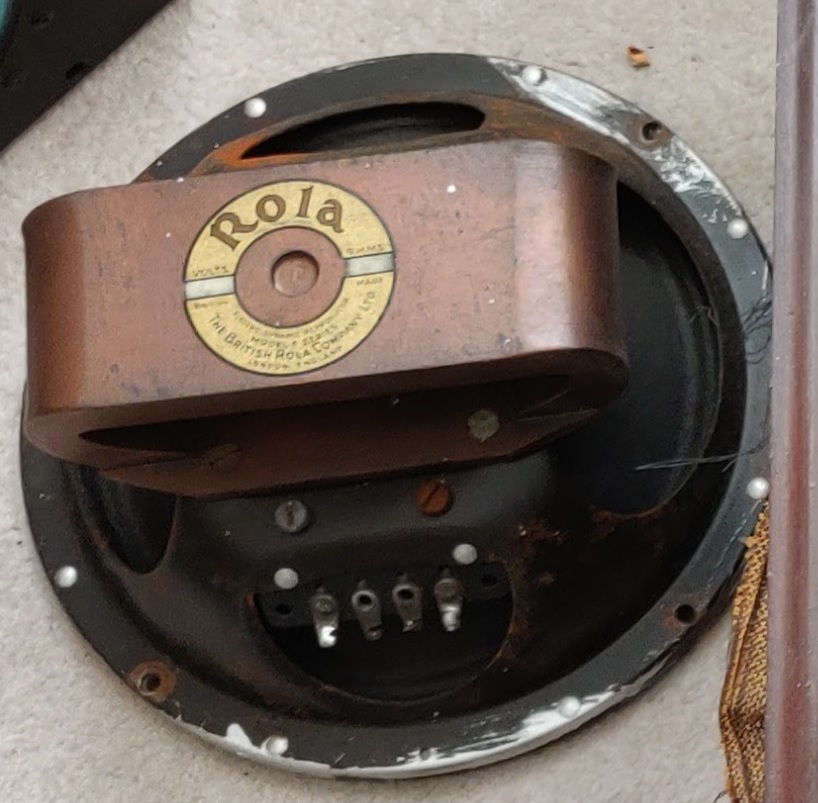This is an old cabinet speaker dating from the 1920s. I was unable to find any details about it on the internet, other than a similar looking Model 140, dated 1929.
It took a while to get the cabinet open as storage and time had rusted some of the screws. Stress on the front and back panels also caused the plywood to delaminate!
On investigating, there was an internal transformer (high impedance to low) and a smaller than standard vintage speaker driver that had been fitted. The transformer had been bypassed. So it seemed that this unit had been ‘got at’ at least twice in its life.
I did some testing of the speaker driver and found it to be ok. It was a very early Rola with moving coil. I suspect that this box originally had a moving iron speaker based on it’s vintage.

Given that this speaker had already been modified for most of it’s life, I’d decided to carry on with that tradition and make it more appropriate for use in today’s environment. I would clean up the case, fix the de-lamination, replace the speaker cloth and add an amplifier with Bluetooth module to make this a really old sounding speaker powered by really new technology.

With VE day coming up the next day, I decided to get this unit turned around and working in time for our lawn picnic! Four hours later I had a working Bluetooth speaker.



The amplifier in the unit is powered from an external 20 volt laptop power supply and is capable of 100W RMS into a 4 ohm speaker with a 36 volt supply.
The impedance of the Rola speaker was quite high at about 100 ohms, so with the 20 volt supply, power output was estimated at 4 Watts, which was sufficient for our needs. If more power output is ever needed the options are as follows:-
- Add a high voltage power supply
- Impedance match the Rola to the amplifier
- Replace the Rola driver for a modern 4 or 8 own unit
Somehow, I would want to keep the Rola, so one day I might create a proper baffle board for it and add a transformer to match it’s impedance to the Class D amplifier more closely.




Leave a Reply